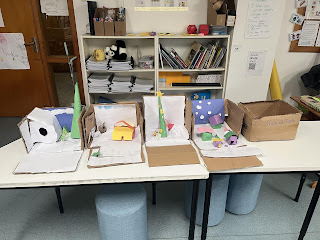After School - Girls Club - Jelly Beans Feed the World
At my second practicum school, every Wednesday at lunchtime certain Grade 5 female students meet for Girls Club. I was involved in this club, for the duration of my practicum. The Girls Club often contains fun/community building activities, however sometimes more serious issues are addressed. Serious issues are usually addressed in a way that is not too heavy, given that the club is seen primarily as a place to go, socialize and engage in fun and/or interesting activities and games.
The third week I was attending the club, I did an activity with them called Jelly Beans Feed the World, found on a Girl Guides Activities website, and originally from the Red Cross. To quote the activity:
"Goals:
The third week I was attending the club, I did an activity with them called Jelly Beans Feed the World, found on a Girl Guides Activities website, and originally from the Red Cross. To quote the activity:
"Goals:
- To show that there is enough food for everyone but food is not distributed evenly.
- To help girls understand how it feel not have enough food.
Directions:
- Each girl picks a slip of paper from a can. Eighty per cent will say "poor" and twenty per cent will say "rich".
- Divide the meeting space so that the rich girls have two-thirds of the space and the poor girls are crowded into a corner at the back of the room.
- Give the "rich" group a bowl of jelly beans (more than three per person) and the "poor" group a small bowl with just a few jelly beans (not enough for each child).
- Before the girls begin to eat they must decide how to divide the jelly beans. To take this exercise a step further, discuss the distribution of space during this exercise. Compare the population of Canada to other countries that are heavily populated.
Note: Before the end of the meeting, provide extra jelly beans for the girls in the "poor" group.
Discussion:
- 1. How did the two groups feel about the way the jelly beans were distributed?
- 2. Did the rich group share with the poor group? If they did share, how did they decide to share and how much to share? 3. Why is food important? Why is sharing important? What happens when you never have enough to eat and always feel hungry?
- 4. Should rich countries share with poor countries? How can we do this?"
After asking these questions, I consolidated the activity with facts about poverty. Most North Americans do not think of themselves as 'rich', yet according to one statistic, 80% of the world lives on less than $10 a day. 5000 children a day die from lack of clean water. The girls were shocked by statistics like these. Many of the statistics used come from globalissues.org.
It was remarkable the rich conversation that emerged from this activity. The girls had a lot of great ideas about how they might distribute food more evenly between people, and in many cases insisted on drawing pictures communicating how food is distributed worldwide. Even this activities 'rich' girls felt that the distribution of food (candy) was unfair. The students were able to articulate well, why people needed food and why sharing is important. When asked what they wanted to do with their candy, they suggested sharing. (and in the end every girl was able to receive three pieces of candy)
Were I to have stayed at the school longer, I might have introduced the idea of raising money for an international aid organization, such as The Red Cross. Many students were engaged with these questions and sharing their opinion on the issue, and with a little bit of guidance they might have showed some interest in pursuing a goal to help others.
This activity constitutes Commitment to Students and Student Learning, although initially students were presented with two different scenarios, we came back together as a community after the initial activity. We shared our opinions and reasoning, all for the sake of developing 'contributing members of Canadian society'.



Comments
Post a Comment